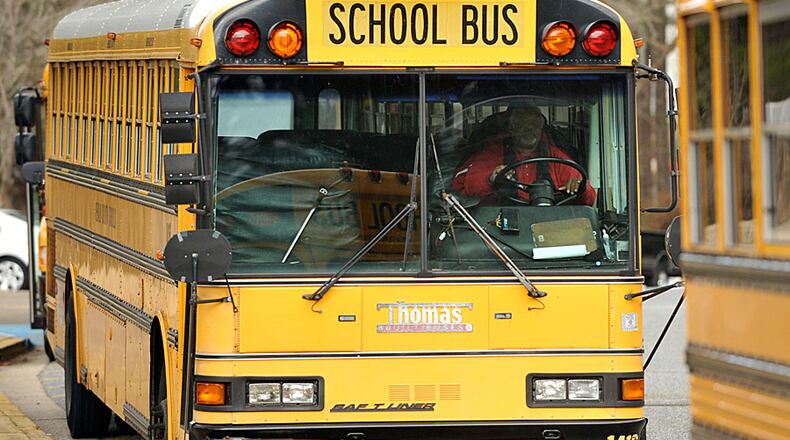After more than a decade of parched budgets, school district leaders are glad Gov. Nathan Deal has proposed $315 million worth of relief.
That money won’t be enough, however, to turn back the tide of furloughs, pay freezes and staff reductions school systems have used to balance district budgets, education officials say.
The governor has said he’d like to see some of the money used to give teachers a pay raise. Some districts seem poised to pass on the extra money to teachers; others plan to use the money to reduce furlough days.
Deal has attempted to end those furloughs in the past. In 2011, he said he’d put enough money in the budget to end teacher furloughs. However, districts have continued to furlough teachers and staff as they dealt with difficult economic circumstances.
Gwinnett County schools Superintendent J. Alvin Wilbanks said the additional money “will certainly assist … as we struggle to provide essential operational services to support our core business of teaching and learning and possible salary increases for our teachers and staff.”
Cobb County faces an $80 million budget shortfall, and the governor’s plan would make closing that gap a bit easier.
“We haven’t had time to do a careful analysis, and won’t until we know the final numbers, but right now we are making the rough assumption that the governor’s budget will add approximately $20 million to next year’s Cobb County School District budget,” said Jay Dillon, Cobb director of communications. “That is a significant increase that will go a long way toward easing the financial concern in Cobb.”
In DeKalb County, Superintendent Michael Thurmond said the governor’s proposal could mean an additional $10 million for the district, where teachers have four furlough days this school year.
“My first priority would be to reduce or eliminate the furlough days,” Thurmond said.
Most districts have not calculated precisely how much money Deal’s proposal could mean for them.
In rural Georgia, any help could be huge. Unlike in metro Atlanta, where large property tax bases give school districts another substantial source of revenue, rural districts have much smaller property tax bases. That leaves them with far fewer options when state funding is limited.
Since 2002, state lawmakers have withheld a collective $7.6 billion from school districts. The state’s funding formula called for that money to be distributed to districts, but lawmakers, cutting back in a variety of areas to balance the budget during the economic downturn, imposed what are called “austerity cuts” and withheld the money.
With the recession-fueled drop in property values, districts also pulled in less money in property taxes.
That double whammy made things extraordinarily tough in rural school districts.
Ruth O’Dell, superintendent in Franklin County in the northeast corner of the state, said her district cut the school calendar from 180 days to 160 days, raised the property tax rate and imposed furloughs on teachers and administrators. Booster clubs were required to pay for half of all athletics travel. Seventeen teacher positions were eliminated; art and music programs were cut.
Supplemental funds used to recruit teachers to Franklin were wiped out, as was funding for professional development.
“I have cut the budget and cut positions since I’ve been here,” said O’Dell, now in her seventh year as Franklin superintendent. “I have never known anything else.”
O’Dell said she does not know yet how much Deal’s proposal could mean for her district, but she’s glad she’ll have the flexibility to spend it as she and the school board see fit rather than having it directed to pay increases for teachers.
“They’d have had a pay raise and then furloughs,” she said.
State schools Superintendent John Barge, challenging Deal in the Republican primary as the governor seeks re-election this year, said Deal’s plan doesn’t go far enough.
“This is a start, but it is not nearly enough to offset the massive cuts that schools have taken over the past decade,” Barge said. “While this money will help some districts stop the bleeding, it will likely not allow many of our districts to restore the 180-day school calendar, eliminate teacher furlough days and give teacher pay raises. The stark reality is that it will take years of restoration for many of our school systems to address all of those issues.”
Deal has said that if he is re-elected he will push for changes to the state’s complicated Quality Basic Education funding formula. That hope is tempered, however, by fears among education officials that the formula will simply be adjusted so that it calls for districts to receive less money. Such a move would kill the politically potent argument that lawmakers aren’t giving districts all of the money the state’s formula calls for them to receive.
Lawmakers already have changed the formula that determines how much districts receive in “equalization funds” — state money that’s supposed to offset imbalances in the value of taxable property from district to district.
As with the QBE formula, lawmakers did not distribute to districts all of the money the equalization formula called for districts to receive. The equalization formula was changed to call for funding levels closer to what lawmakers were approving.
Tracey-Ann Nelson, director of government relations for the Georgia Association of Educators, said the same thing could happen with the QBE formula.
“You can always make the formula fit the money,” she said.
About the Author
Keep Reading
The Latest
Featured


